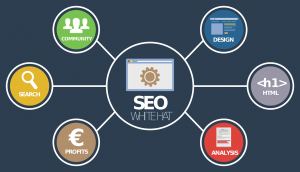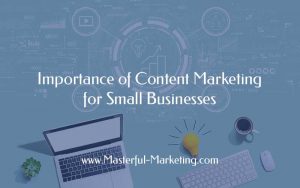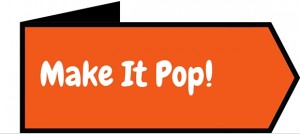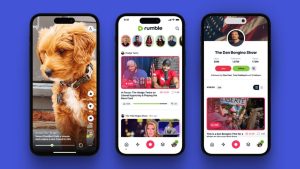Did you know that Pinterest enables nearly two billion searches a month?
Some sources say that it’s as many as 5 billion.
This image-based content curation platform is one of the top social media networks around.
The platform’s 478 million users use Pinterest to find inspiration and to collect and organize ideas.
Since it’s an image-based platform, the top types of content are for clothes, crafts, art, and virtually anything that need pictures to appeal to users.
Having your brand’s Pins show up as a top result for the right searches can make a big difference to your business.
You’ll grow your brand, drive traffic to your website, and boost conversions too. In this post, we’ll share how you can optimize your Pinterest content to rank for relevant keywords and topics.
With the tips given here, you’ll make your content more visible and find more customers.
Create a good username
Your Pinterest URL is an important piece of real estate. When creating your username, make sure you enter your brand name. Or you may opt for a username that reflects the topic that you’re creating content for.
The username you choose will reflect in your URL. It will help Pinterest know that your account is legitimately associated with your business. Search engines like Google also display Pinterest profiles as a result when people search for specific companies.
When you create a Pinterest profile and use your brand as the username, you create an SEO-friendly URL. And you support your branding efforts to let customers know that your account is associated with your company.
Be image heavy
Pinterest is a visual platform. And this makes the images that you use the most important component of your entire content.
Here are the top tips you have to apply to optimize your pins for Pinterest:
- Add high-quality images using the vertical orientation
- Use a 2:3 ratio for all your images
- Make sure that your images match your content as much as possible.
Pinterest is an advanced platform that uses AI algorithms to annotate your images. This means that its AI creates labels for the objects it detects on pins.
https://medium.com/pinterest-engineering/understanding-pins-through-keyword-extraction-40cf94214c18
In this image, Pinterest’s computer vision algorithm automatically detects ‘sloth’, ‘sloth sanctuary’, ‘travel’, ‘Costa Rica’, and more. it can even add labels or annotations that you haven’t manually inputted into the description or title.
Pinterest uses the labels are and the annotations it derives from your images to rank your pin on users’ home feed, as recommendations for related pins, and to suggest more content for users’ boards.
So, it’s critical to create and use the right images with careful consideration.
Avoid using generic or random images as much as possible. Using original images will serve you well especially when you follow the guidelines on image sizing and quality.
Keep your content consistent across platforms
One of the popular uses of Pinterest is to promote your blog posts. You can create Pinterest-friendly images for your blog and using a Pinterest extension or share button, add it to your Pinterest profile. It’ll link to your post and users who click on the Pin will read your blog content.
Pinterest also refers to the source i.e your blog post or web page your Pin links to so that it can rank your content. So, keep the content on your Pins the same as the blog posts you’re linking to. That is, make sure that the title, description, and image itself reflect the content on your website.
Create context
While Pinterest algorithms can figure out what your images are about, you still need to create a context using the Pin title and description features.
Add relevant keywords in a natural-sounding way in your titles and descriptions areas. Important locations include your board name and description, your profile, and the Pins themselves.
Mentioning the right keyword or phrase 2-3 times with variations will help establish context for your content. And this will help Pinterest rank your content more accurately.
Create rich pins
So far, we talked about manual ways to optimize your descriptions and titles. However, if your content changes but your Pins don’t reflect them, this creates a poor experience for users and also prevents your Pin from ranking well.
Pinterest has come up with the Rich Pin feature for business accounts.
Rich pins are things that automatically sync with the content on any website. If a product description on your website changes, then the description on the Pin will also.
This type of optimization lets Pinterest know what your Pin is all about. And the impact of this can be seen in search results on Pinterest and Google as well.
To create Rich Pins, start by converting your individual Pinterest profile into a business one.
Then you need to validate your website with Pinterest.
To do this, use an SEO plugin like AIOSEO to add social meta to your home page. This adds helpful information to your website that Pinterest’s tools will look for. Next, submit your URL to Pinterest for validation. Once your domain is validated, your pins will start to reflect the content on your website automatically.
Add text to your images
Another important step that you can take is to add text to your Pinterest images. If you’re sharing a blog post, add a text overlay that’s the same as your blog title.
You can also add textual descriptions for standalone images.
Text overlays on images make it easier for users to understand what your Pin is about with just a glance. This creates a good user experience which is something that Pinterest looks for and rewards with higher rankings.
Create Video Pins
Creating video Pins increases the chances of your content making it to a user’s feed. Video Pins draw the eye with movement and the actual content itself. And it stands out in a field full of static images.
Here are some ways to optimize your video pins:
- Hook people in from the first second with action that piques their interest. Ask a question, show a before and after, or a good headline
- Optimize your descriptions and titles
- Create an informative cover image so that your audience knows what your video is about right away
- Keep your videos short and under 60 seconds. Using 15-second video Pins works best
- Add captions to provide information as many users don’t see videos with the volume on
Conclusion
You need to optimize your content for Pinterest just as you would your website for search engines like Google.
The effort is well worth it because there are several hundred million users active on Pinterest every day.
Making sure that your images are high-quality and relevant to your topic is the most critical aspect of your ‘Pinterest search Optimization’. With good images and the other tips mentioned here, you’ll improve the chances of your content appearing on your audience’s feed. With a higher Pinterest ranking, you’ll also see better conversions, traffic, and a stronger connection with your audience.
Digital & Social Articles on Business 2 Community(59)








